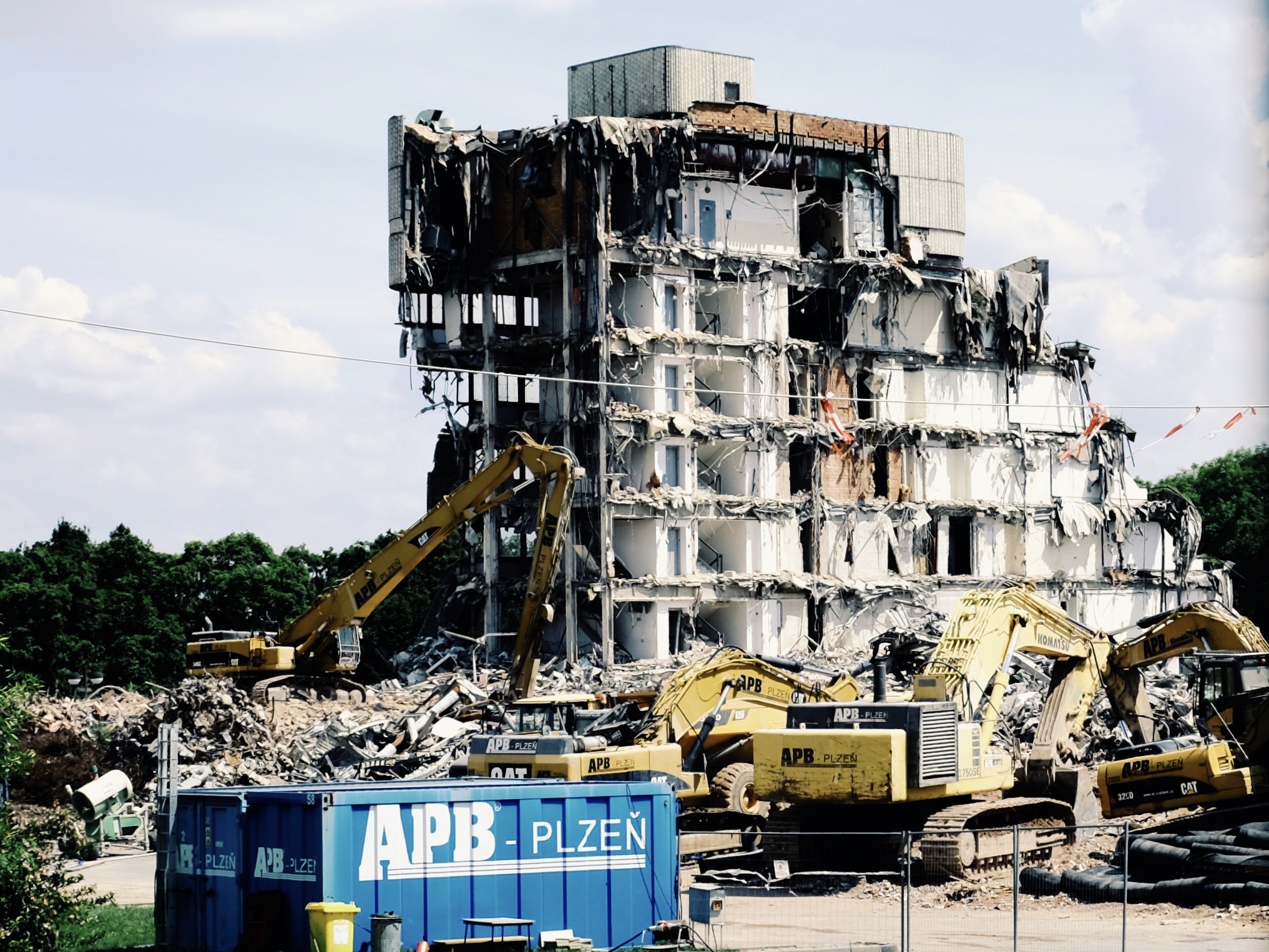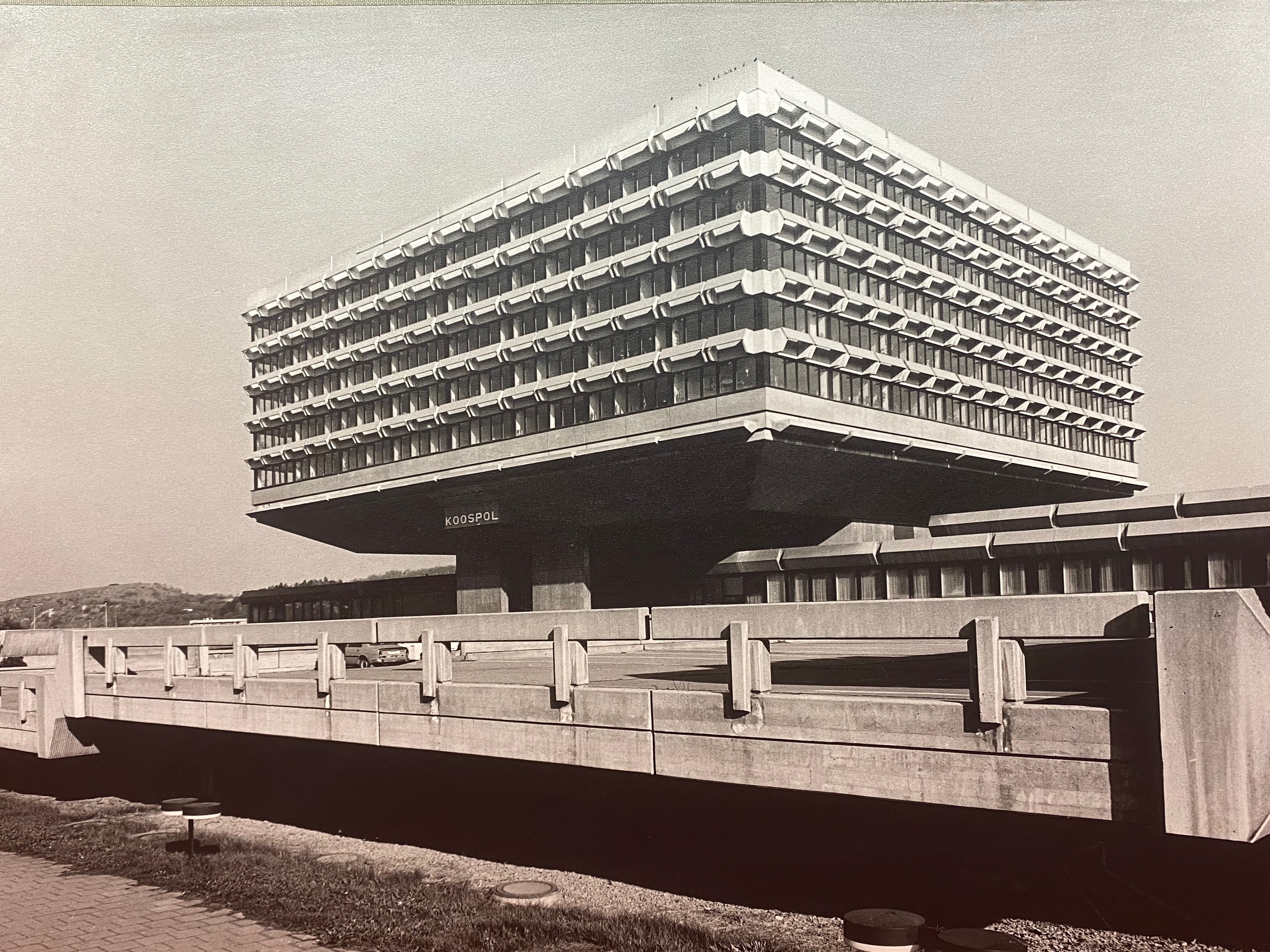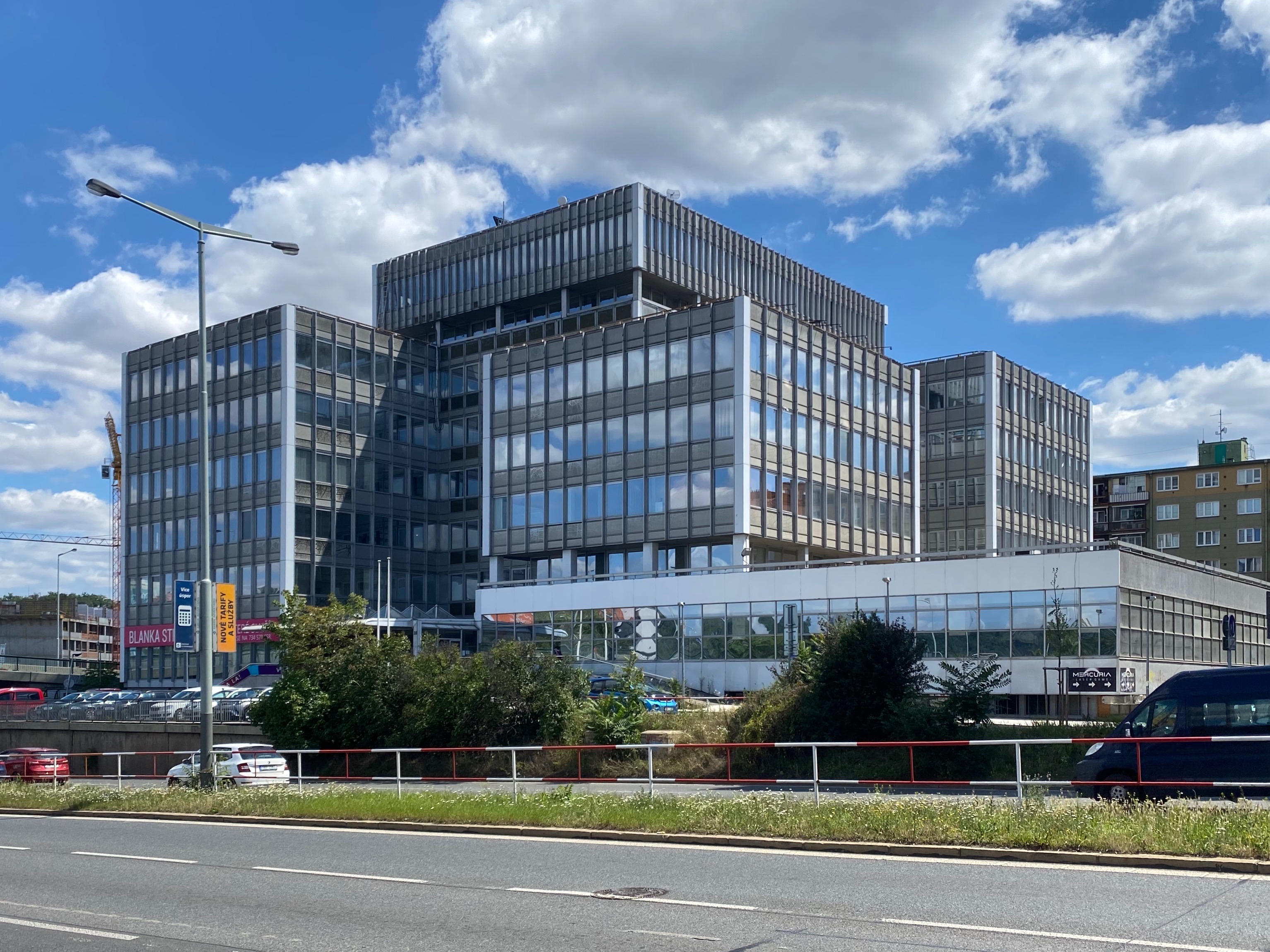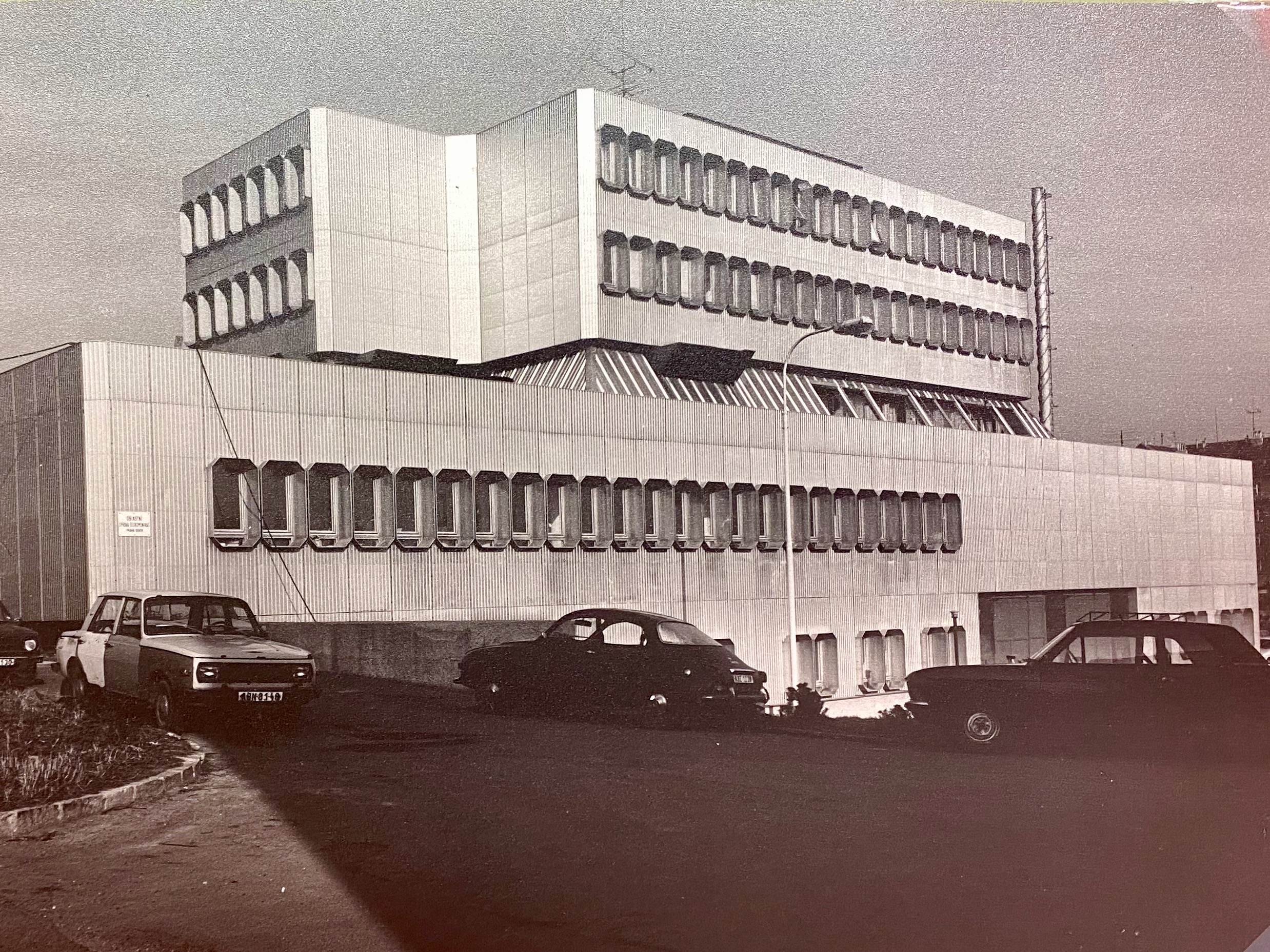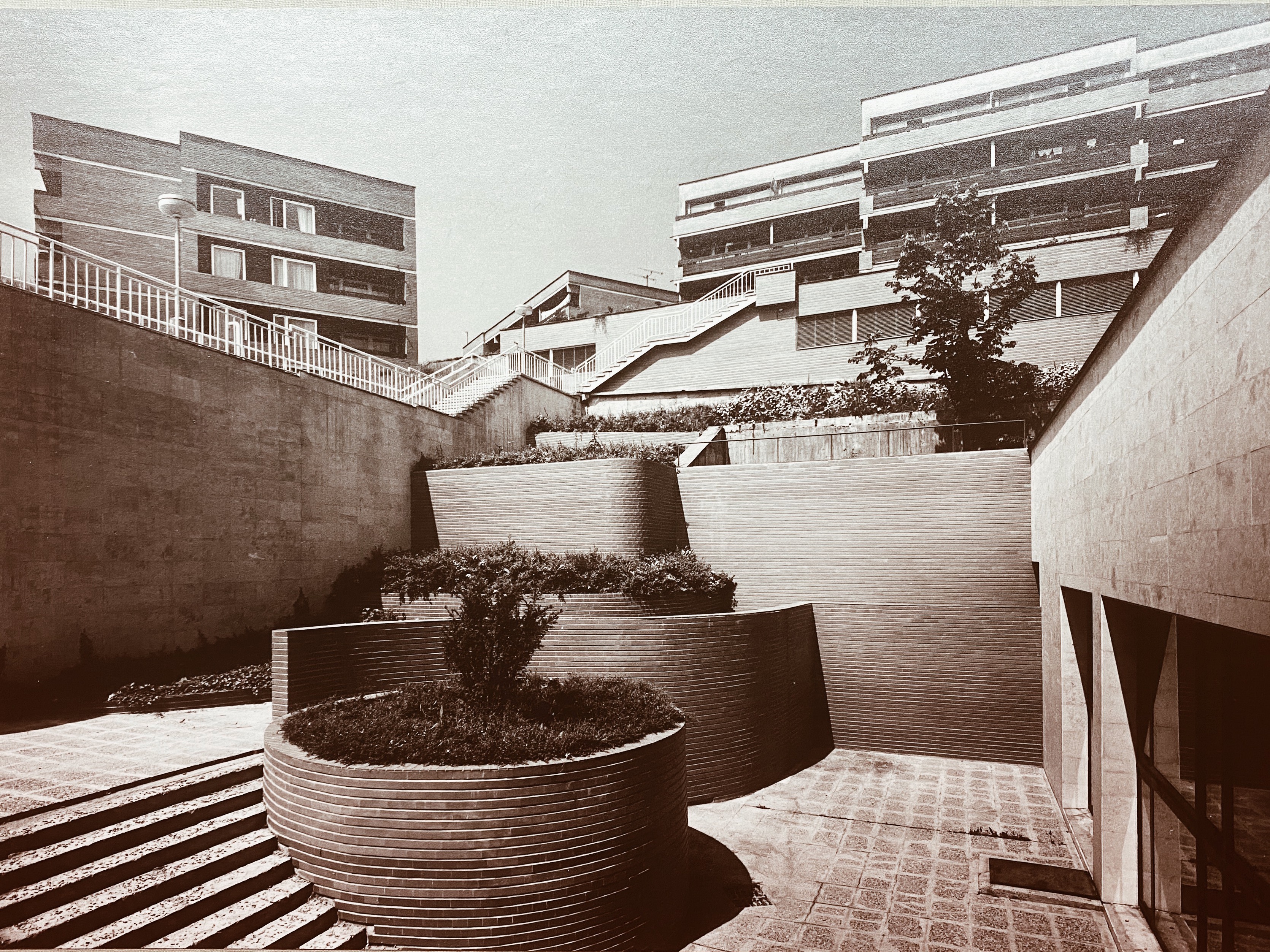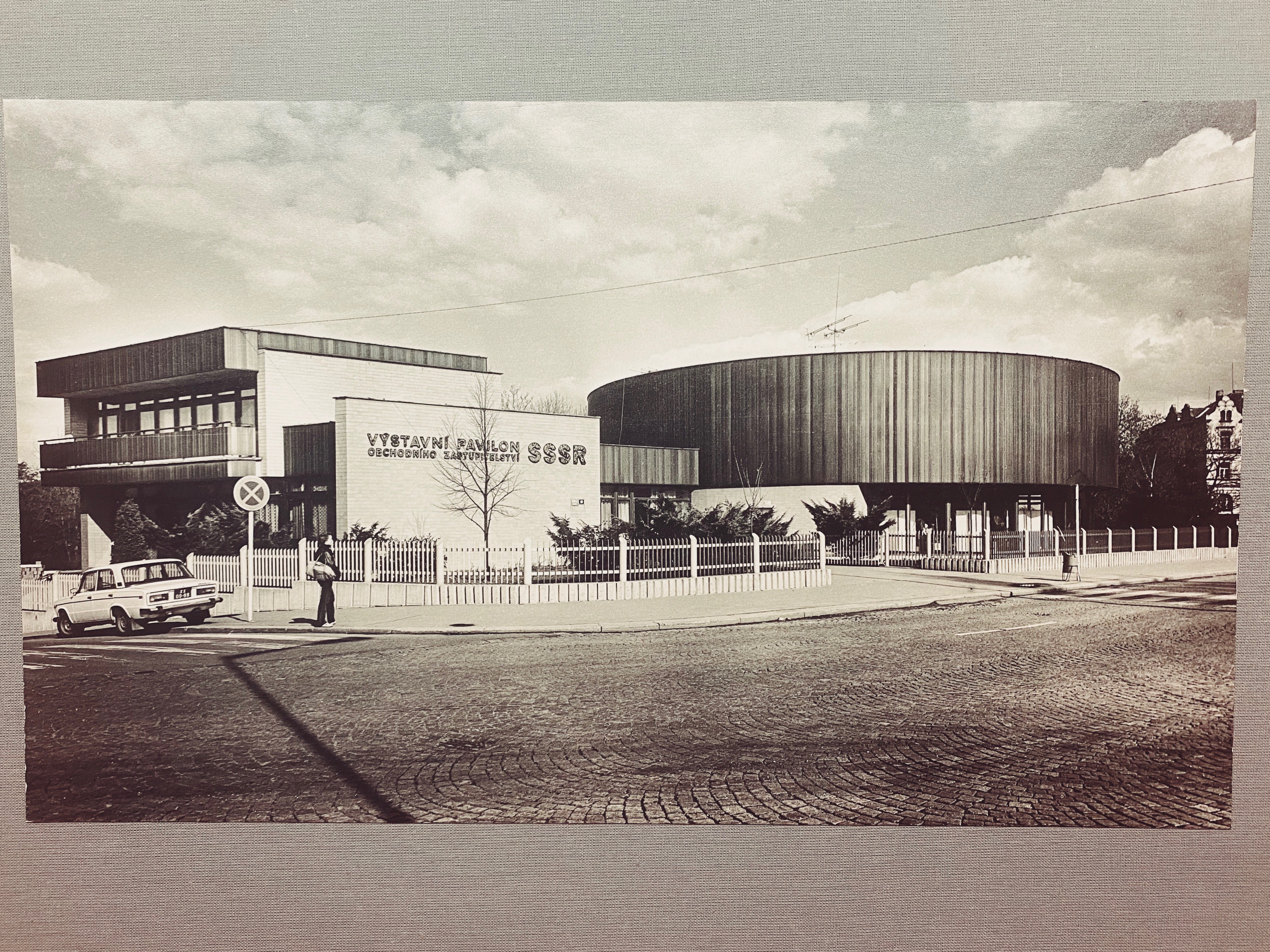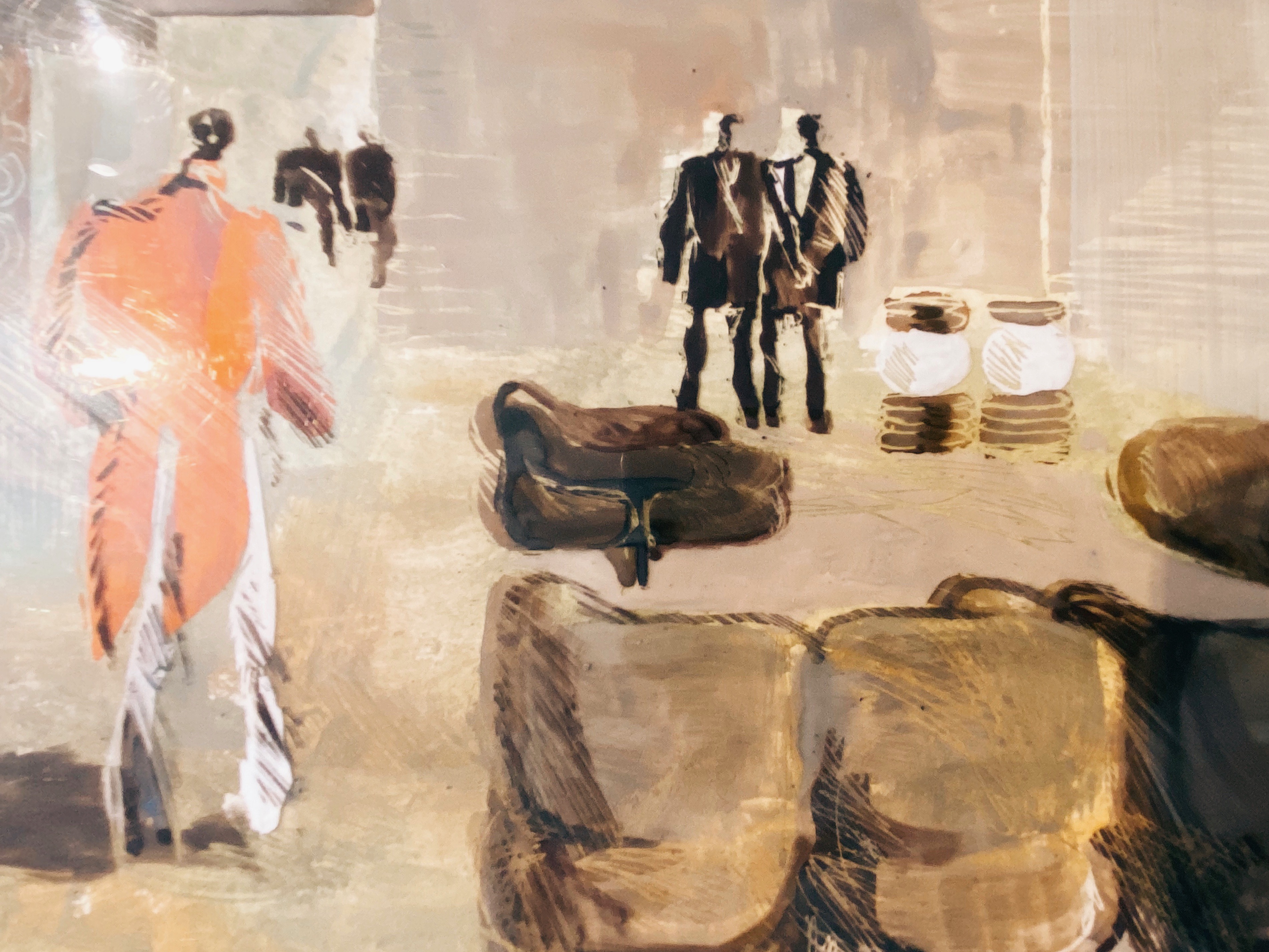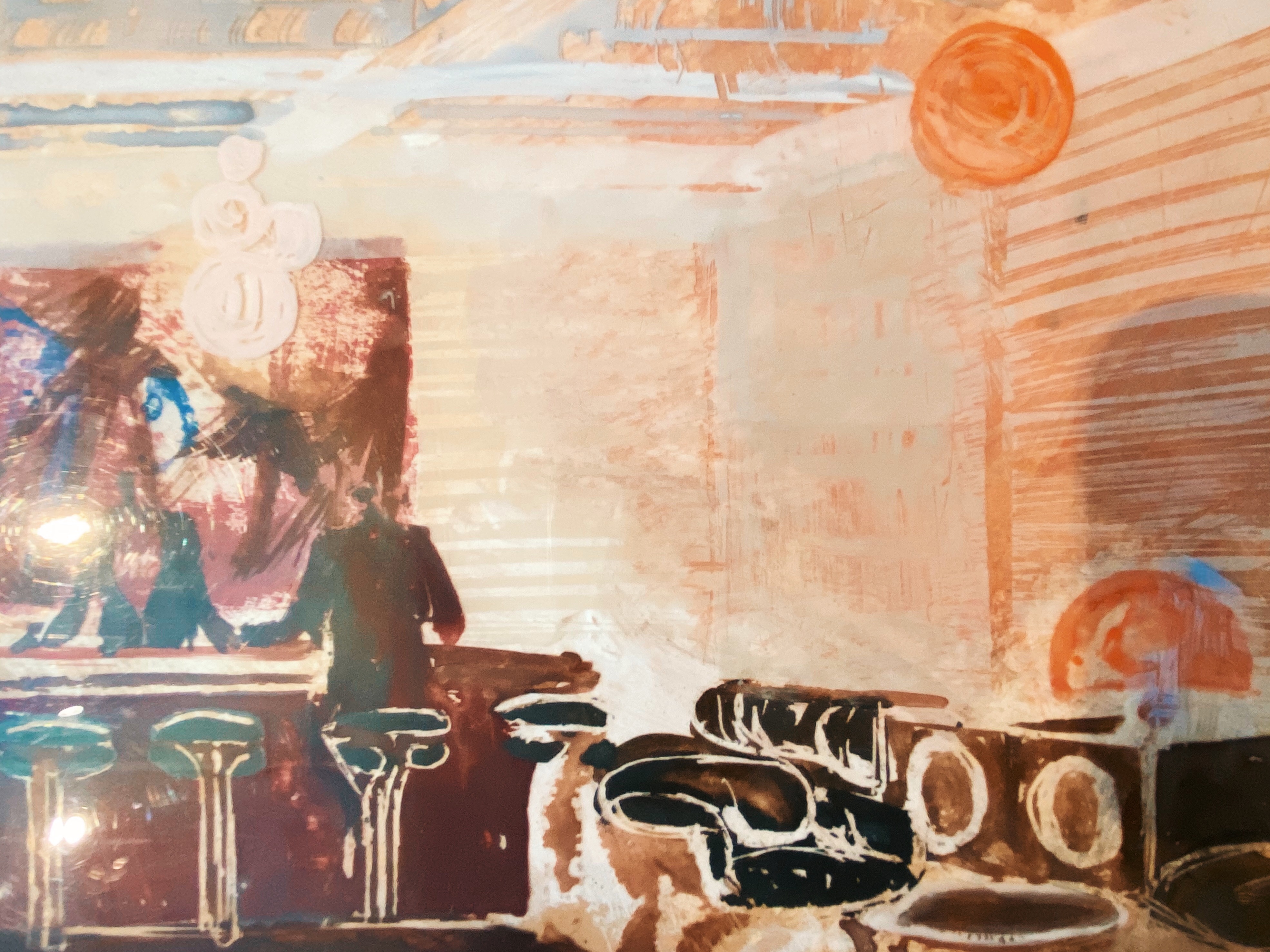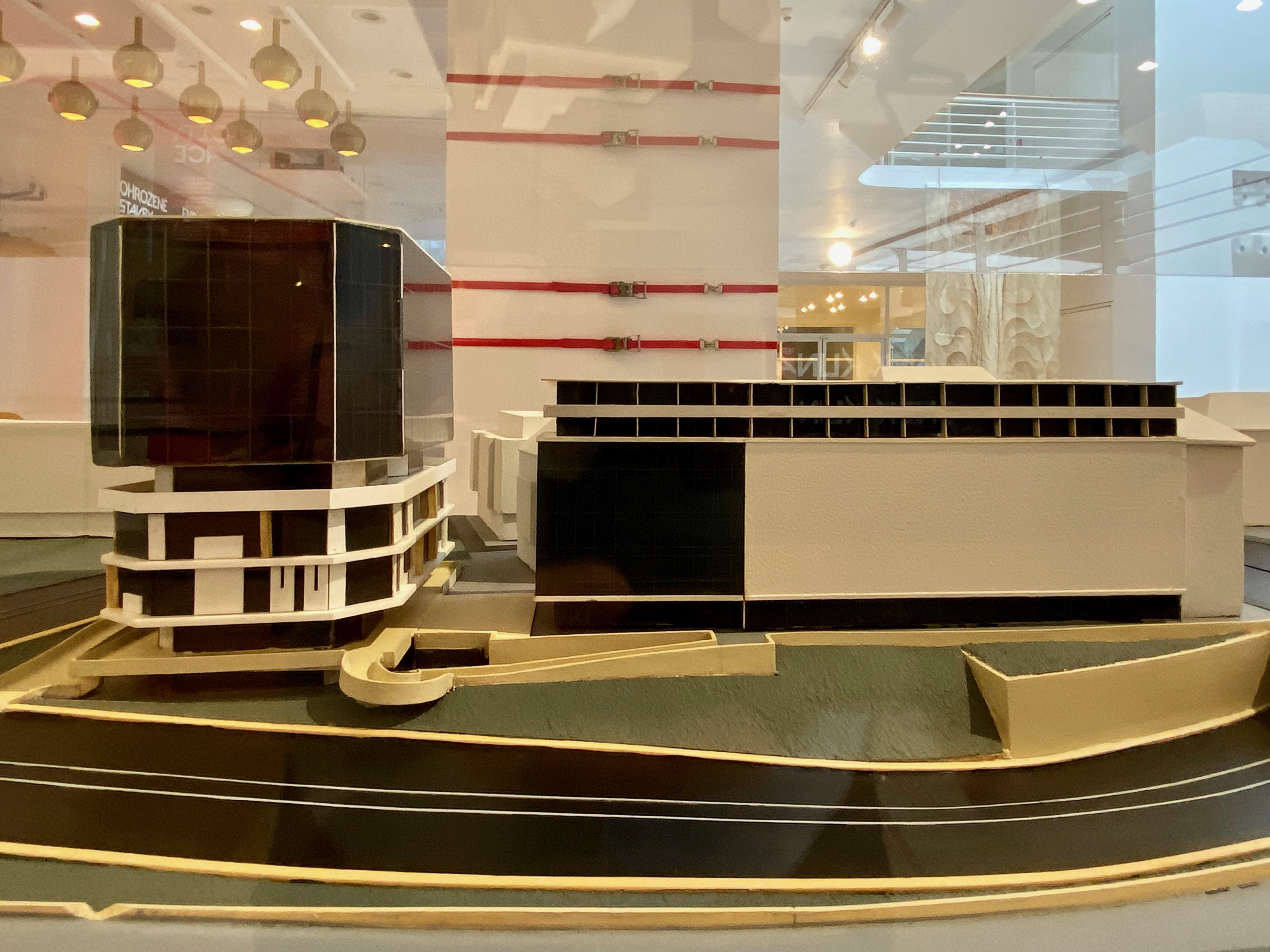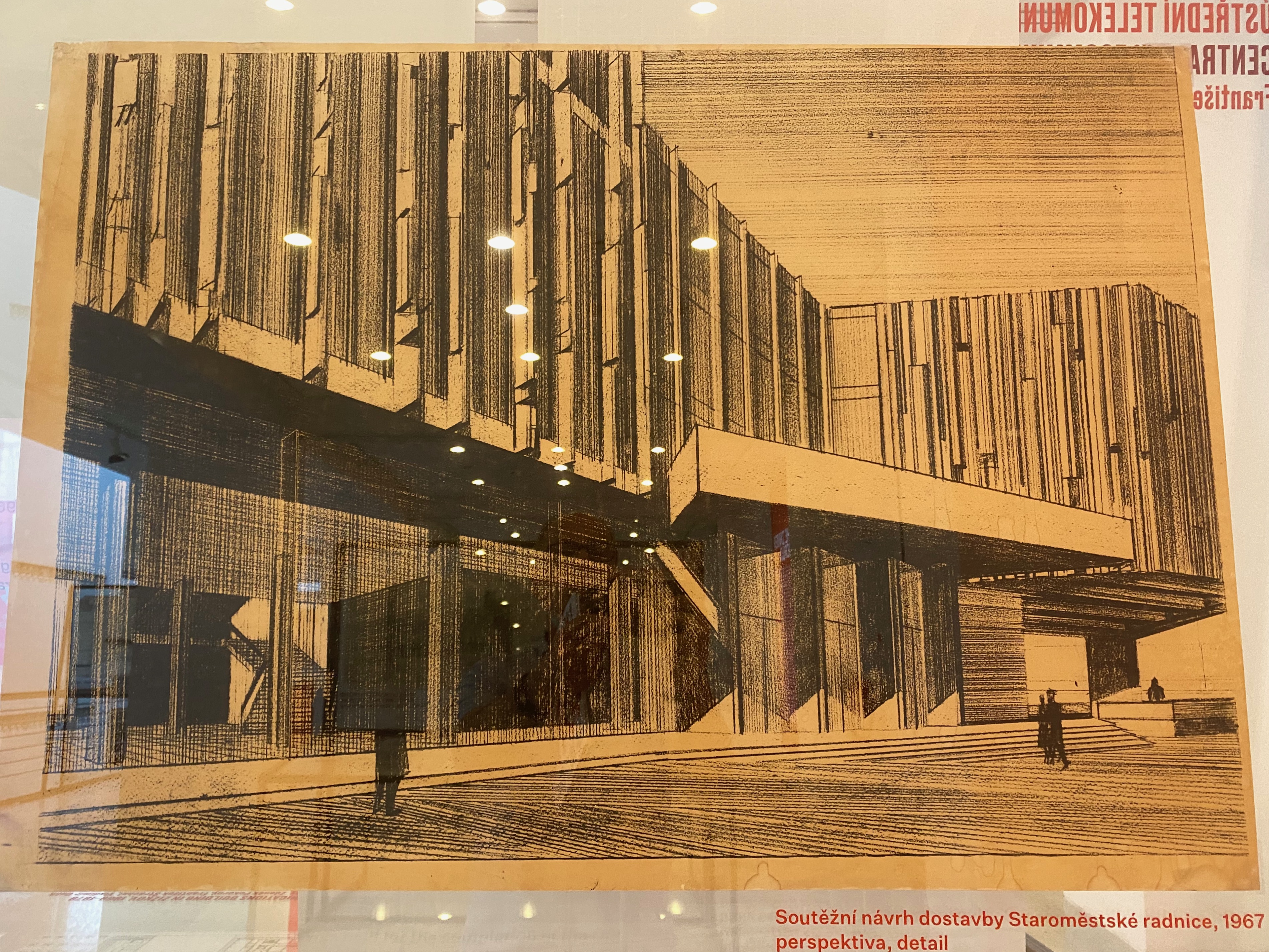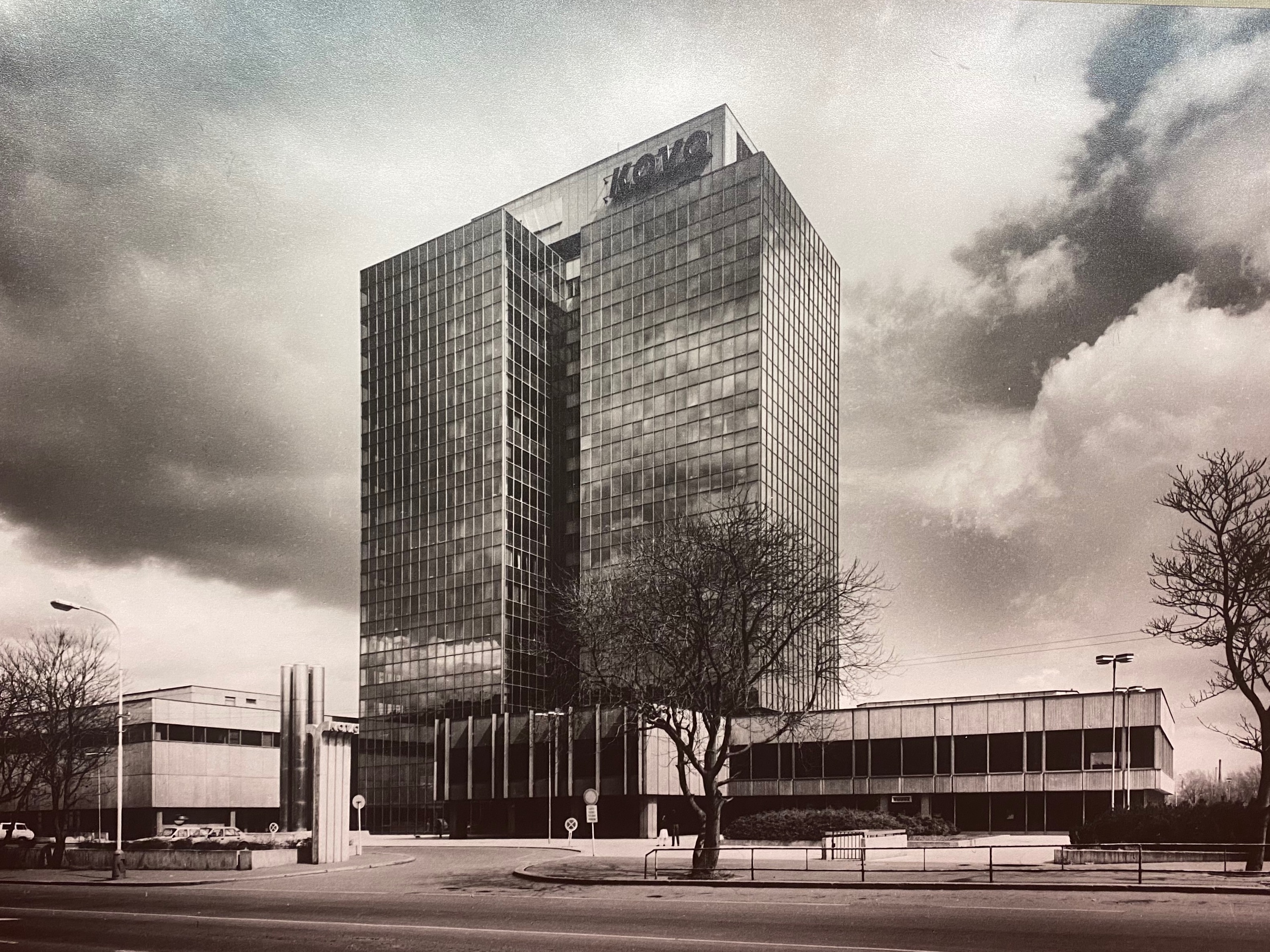From the 1960s through the 1980s, Czechoslovak architects and planners designed and built hundreds of buildings around the country in an aggressive, modern style – Brutalism – that had swept through Western Europe and the United States in the decades after World War II. The buildings were monumental in scale, sheathed in modern materials like concrete, glass and tile, and aggressively "honest" (or ugly, depending on your point of view) in appearance. Nothing – pipes, ducts, wires and vents – was hidden. The guts were on the outside.
The curators of the National Gallery’s temporary exhibition, “No Demolitions! Forms of Brutalism in Prague,” have identified 35 representative Brutalist buildings in the Czech capital that have either been demolished or are threatened with destruction or insensitive restoration. Of the 35, three have already been knocked down and seven are considered “endangered.” Only three buildings enjoy cultural-heritage protection.
The issue of what to do with Brutalist buildings around the country remains highly controversial. Many of the buildings, with oversized footprints and faded, weathered exteriors, lack the immediate aesthetic appeal of more-popular, decorative styles like Art Nouveau. They’re the Czech cousins of those “monstrous carbuncles” that Britain’s Prince Charles railed against all those years ago.
Moreover, the buildings are indelibly linked in the minds of Czechs with the former communist regime, particularly the regime’s final two decades in power after the 1968 Warsaw Pact invasion. That was a period of cultural stagnation that people here warily refer to as “normalization.” Many Czechs would no doubt be content to haul out the wrecking ball and pretend the whole Brutalist thing never happened.
Last year’s demolition of the Brutalist Transgas building from 1972-78, in the Prague district of Vinohrady, was only the most recent in a string of knockdowns and insensitive restorations the past few years. In 2014, the Hotel Praha (see top photo), a luxury property built in 1981 that once counted as guests the likes of Erich Honecker and Tom Cruise, was pulled down on the orders of Czech multimillionaire Petr Kellner. He’d purchased the hotel and surrounding land with plans to build a private school. The hotel was reduced to rubble and the school never built. The Czech Republic forever lost the coolest cocktail bar it will ever have.
Two summers ago, I wrote here about another famous Brutalist building, the Hotel Thermal in the Czech spa town of Karlovy Vary, undergoing its own precarious renovation. Preservationists, including the grandchildren of the building’s architects, Věra and Vladimír Machonin, are worried the restoration – still ongoing – could well destroy surviving design details that lent the building its unique character.
That’s the freighted social and cultural context the organizers of the current exhibition have waded into. They’ve obviously tipped their hand as to how they personally feel with a title of “No Demolitions!” What’s left now is the hard work of convincing a skeptical public the buildings are worth the effort of understanding and the expense of preserving.
After having viewed the exhibition, I think it’s still an open question whether it will make any headway toward that goal.
Over the years, I’ve noticed that museums in Prague often favor an overly academic, grad-school approach in the way they present their subjects. Exhibitions – particularly on subjects like architecture that lend themselves to wordy, theoretical treatments – tend to land on the dry side. They’re heavy on text and photos, while lighter on presenting real-life objects that might better convey the essence of a subject.
And that’s, perhaps, this show’s biggest flaw too. The exhibition opens with clear, helpful photographs of the highlighted buildings and a large map of Prague, showing the buildings’ locations and relative threat levels. But the meat of the exhibition itself is rather thin; the displays are divided thematically, with large panels of dense text that attempt to define Brutalism in terms of various abstract topics, such as “Composition of Volumes,” “The Inner World” and “Plasticity of Surface.”
Some of the long-form texts succeed better than others, though I might have favored a simpler approach that addressed more directly popular concerns about these “ugly” buildings. It might have been better to confront head-on in plain language widespread criticisms, such as why the buildings are so big or the exteriors so aggressive or the interiors so cramped (given the size of the structures). There are logical answers to all of these, anchored in Brutalism’s basic principles, but you have to read between the lines to find them here.
Helpful 3D renderings, architectural sketches and occasional pieces of interior design are scattered among the photographs and long-form texts, but there could have been more of this kind of thing. Brutalism was as much a tactile as a visual form of architecture; the architects often draped both the exteriors and interiors of the buildings in sheets of ceramic, metal, concrete and glass. I could have imagined a “wall of forms,” where visitors could touch and feel the various construction materials. Some fully fitted-out interiors to highlight how the furniture, decorative elements, textiles and lighting all worked together – a “gesamtwerk” as the exhibition termed it – would have been nice too.
But I don’t want to appear overly harsh. I count myself among Brutalism’s biggest fans and appreciate the organizers’ aims. I left more than satisfied with my 150Kč ($6) admission investment.
The first positive is that the curators have finally given me a credible working definition of the word “Brutalism” to fend off pesky trolls who insist Brutalist buildings must always and only be made from raw concrete – people who adhere religiously to the French origins of the term as coming from “béton brut.” Curiously, many examples of Czech Brutalism don’t feature exposed raw concrete on their exteriors, but rather glass, stone, metal or ceramic tiling. According to the exhibition text, this was due to the dire condition of Czechoslovakia’s centrally planned building industry.
Instead of towing the “raw concrete” line, the organizers have widened the definition of Brutalism, according to criteria set out by the British critic and theoretician, Reyner Banham. Banham postulated that Brutalist buildings must exhibit three features: a formal legibility of plan; a valuation of materials [for their inherent qualities] “as found”; and a clear exhibition of structure. I’m still not sure I entirely get it, but if the National Gallery says a building is Brutalist, then who am I to argue? (I guarantee once I post this article to Twitter, at least a couple snarky commenters will insist these Czech buildings are not “real Brutalism.”) Ho hum.
“No Demolitions!” also opened my eyes to several unrealized Brutalist projects that I'd never heard of before. The most important (and shocking) of these was a planned 1967 Brutalist extension to Prague’s Gothic Town Hall on Old Town Square (see photo). The wing would have replaced portions of the building destroyed by retreating German soldiers at the end of World War II. The Town Hall might have been struck by Nazi rockets, but it's fair to say the entire city dodged a bullet the day that project was scrapped for good. No matter how well-thought out the new wing would have been, it would have irretrievably marred the square’s medieval character.
Some of the others included a fascinating proposal for a department store in Pankrác (see photo) by Czech architect Karel Prager that was never built. Prager’s creations – love ‘em or hate ‘em - dot the city; I spent several years myself working inside of one of his buildings: the former Federal Parliament at the top of central Wenceslas Square, which once housed the headquarters of Radio Free Europe/Radio Liberty.
Prager was also the mastermind behind possibly the most audacious Brutalist project to never make it off the drawing board: a massive, interlinked series of shops and housing blocks that would have floated on support poles over the long, deep Košíře Valley in Prague 5. Some of the buildings in that project would have towered tens of stories over the surrounding landscape. Had it been built, it would no doubt be a major tourist attraction to this day (though possibly also looking like it was on the verge of perpetual collapse).
Maybe the best part of the exhibition, for me, is that it provided an opportunity to spend an afternoon hanging out with “old friends.” By happy coincidence, I was personally familiar with many of the 35 buildings the curators chose to represent the style from my own trips to Prague and Czechoslovakia from 1986-89. If I were looking for an experience to transport me, temporarily, back to those times, I couldn’t have chosen better.
By the mid-1980s, at around the time that I first wheeled into town, Brutalism was at the height of its prestige. It was the style of choice for buildings housing the country’s most important foreign-facing organizations, like big hotels, exhibition halls and foreign trade organizations. I spent much of my time back then hanging around in Brutalist buildings.
It felt like a walk down memory lane to look over the photos and construction plans of the now-defunct foreign trade organizations (FTOs), with their strange names like Merkuria, Centrotex, Koospol, Kovo and Omnipol. Before the 1989 Velvet Revolution, these all-powerful trading companies oversaw imports and exports worth tens (if not hundreds) of millions of dollars and were run by high-ranking members of the Communist party. Most of the FTOs were privatized or decommissioned in the 1990s, and I hadn’t thought about them in years.
FTO Merkuria specialized in trading consumer goods and household appliances, and I often popped in on my trips in the 1980s to speak with the company's director on their trading plans for the year. The old Merkuria headquarters in Prague 7 has been remodeled, but its Brutalist roots are still recognizable (I've posted "before" and "after" photos above for comparison). I never managed to make it inside either the Kovo or Omnipol FTOs. Kovo specialized in trading sensitive, high-tech electronics goods and was off-limits to visiting American journalists. Omnipol dealt in armaments and weapons systems and was even more mysterious than Kovo back then.
On many of those trips, I stayed in another high-profile Brutalist building highlighted in the National Gallery exhibition: the Intercontinental hotel in Prague’s Old Town (see photo). I’ve written in the past here about what a clown car the old “Interconti” was back then, stuffed with prostitutes, party hacks and prowling Western businessmen on the make. My hotel room was even broken into and my money stolen on one of those trips.
That break-in was likely the regime’s not-so-subtle way of telling me I wasn’t entirely welcome, though the anger I felt back then faded away a long time ago. As I strolled through “No Demolitions!,” I realized that time had also served to soften, in my mind, the rough edges on the fronts of all those Brutalist buildings.
"No Demolitions!" runs through November 22, 2020. Many of the photos for the exhibition were taken by Kamil Wartha. For more on Brutalism in Prague, check out this excellent article from Expats.cz by staff writer Raymond Johnston.
